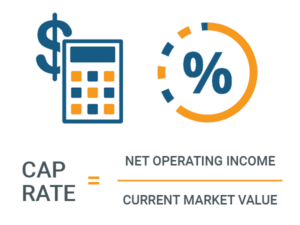The Benefits of Conferences Returning to the World of CRE
As the country gradually opens up, in-person events are at the forefront of people’s minds. The world of commercial real estate has long since benefitted from the presence of events such as conferences. In an industry heavily influenced by relationships, conferences give brokers, market experts, investors, and other interested parties the chance to engage with others on a topic-specific scale. No matter your area of interest, there is a conference to explore.
We’ve had the chance to see what it is like to host events online. While that filled the necessary gaps at the time, it’s important to take advantage of the benefits that only come with an in-person conference. You can find Sands Investment Group at many conferences throughout the year, where you can schedule time with one of our advisors.
Step Out From Behind the Screen
While programs like Zoom have become the closest thing to conferences in the past few years, they are not a replacement for the impact of in-person events. Your physical presence can say a great deal about your work. If you walk into the room confident and knowledgeable, that stands out to people in a way they cannot see over a computer screen.
Networking Possibilities
People attend conferences when the topic matters to them, and they want to be surrounded by others who feel the same. For commercial real estate, this gives you ample networking opportunities with colleagues who have similar interests in your area of expertise.
This brings back the well-known concept of an elevator pitch. When the most relevant information about you is demonstrated in less than 30 seconds, you can establish credibility and cause without having to make the conversation too time-consuming. Make your commercial real estate skills clear from the beginning to draw out the most productive conversation.
Grow Your Brand
By getting your name out into the commercial real estate industry, there is room to grow your personal brand. You can effectively generate leads for your business or establish a list of people to stay in contact with.
Building leads in person creates that connection that the internet lacks. People can connect your face and actions with your business in a way that sticks. This is the best time to have business cards, handouts, and any extra information you need ready to give out, along with a strong handshake.
Discover New Trends and Knowledge
There is always more to learn in commercial real estate. Conferences place you in locations surrounded by those who you can teach things about your market knowledge, but also people who you can learn from. Honing your skills can enhance your work once you step out of the conference and back into the workplace.
This new knowledge often comes from two places: people and panels. By contributing to the networking and discussion, you are sure to learn from those you talk to. On the other hand, these conferences include informational sessions from industry experts on trends and foundational information. In the past few years, these have had to occur online. However, attending a session in person gives you more of a reason to pay attention and speak up when there is something to discuss. There is no more sitting behind a computer screen with the camera turned off.
Schedule Time With a Sands Investment Group Advisor
Have you signed up for an upcoming commercial real estate conference? This may be the perfect time to get to know one of our Sands Investment Group advisors. Step out from behind the screen and get back in person. The networking, knowledge, and growth that accompany it will be worth it. This year alone, we have had the chance to attend Inside Self Storage World Expo, BOMA International’s Medical Office Buildings + Healthcare Real Estate Conference, Private Equity New York Forum, The Car Wash Show, ICSC Las Vegas, and NAIOP – I.CON East 2022. We look forward to attending the NACS Show, Restaurant Finance + Development Conference and many others later this year. Contact our experts today to set up a meeting by calling 844.4.SIG.NNN or sending us an email at info@SIGnnn.com.



























